- Humans, not climate, cause extinction

Professor Jon Swenson and Professor Atle Mysterud are the group leaders of the 2015/2016 CAS research project, Climate effects on harvested large mammals populations. Mysterud’s data on red deer is used here to understand indirect effects of climate on bears. Swenson himself is a bear enthusiast to the bone. When I meet him and Mysterud in their office at CAS, he proudly shows off his leather belt adorned with a silver bear buckle:
– Bears are really nice species to work with because they are asleep half of the year.
Mysterud smiles, and adds:
– The first day here at CAS I thought this year would be the best of my academic life. Normally, we are rarely physically based in the same place as those we collaborate with; we usually work separately and have little time left for discussions. To have one year to actually be seated together, to think and work on the same project, and discuss it in depth, is a luxury and a fantastic inspiration.
Swenson agrees:
– Our hobbies are our lives, in a way. This is what we live for, and what we want to do, and all of a sudden somebody says: do it!
The less obvious, indirect, effects of climate change
This CAS project is analytical: the researchers, who normally work at different universities, run their data from the field into statistical models.
They want to understand better indirect climate effects on harvested large mammal populations, coming to the problem by comparing different species. They look at how climate affects food distribution and the harvesting process in particular.
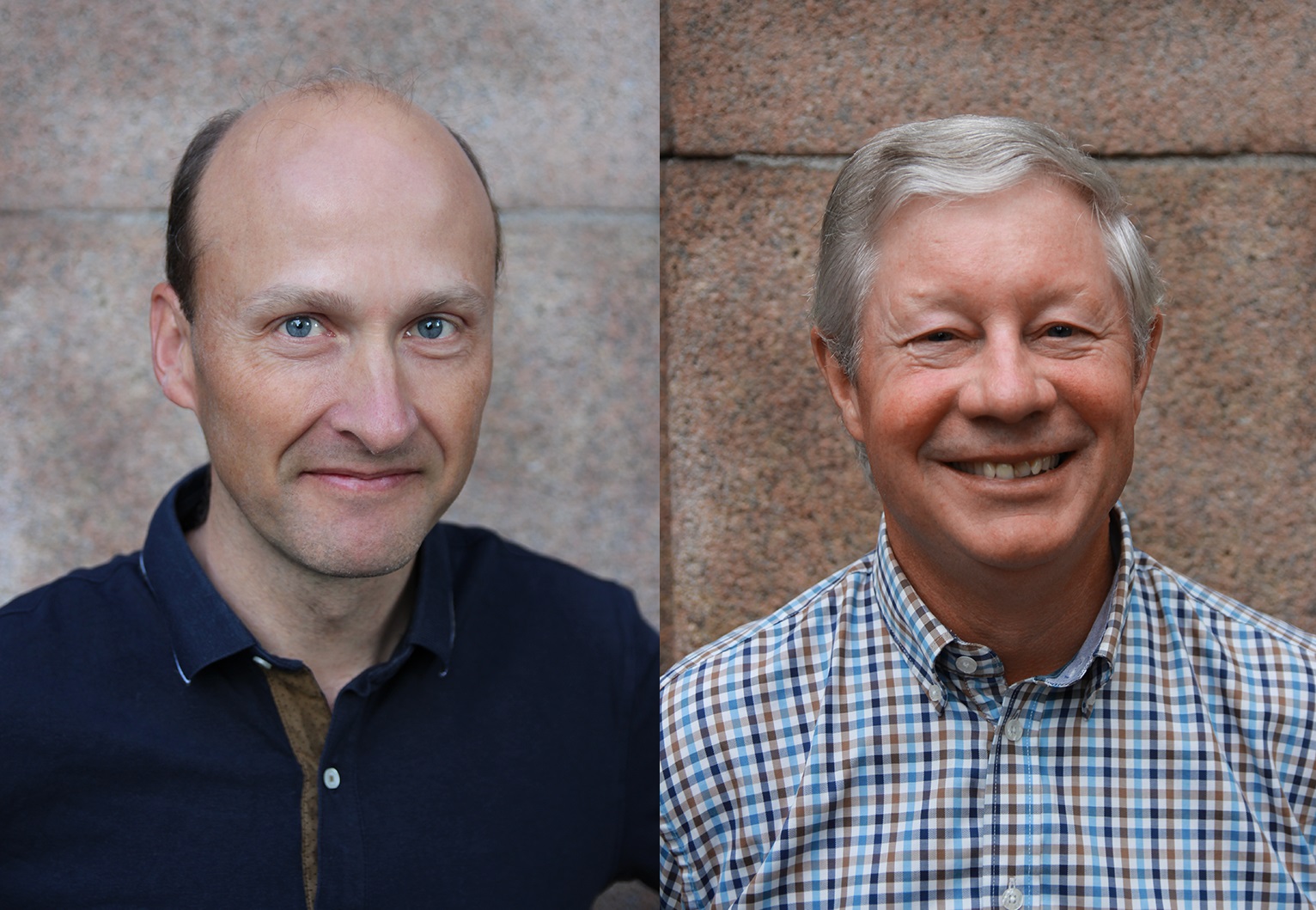
Mysterud observes:
– Climate effects have often been studied as direct effects on temperature, rainfall, and snow, and so on. You assume a direct link, but if climate affects trophic interaction, it can cascade to affect the plants, the predators, and, in this case, to human harvesting.
More specifically, the group aims to understand how three different processes respond to climate change and affect each other. The first of these is life histories, especially as they relate to the timing of events, such as, ‘Does a warmer spring make bears leave hibernation earlier?’ and ‘How does an earlier spring affect the timing of the deer rutting season?’ In the latter question, these two aspects are linked, because the rutting time in the autumn determines the calving dates in spring. The second process studied is that of behaviour, especially in terms of space use; for instance, ‘With fewer berries in an area, does the bear move to a different place?’ The last process is the harvesting. Mysterud goes on to explain this further:
– It’s how humans respond to the climate: how they change management systems, for instance. Say that they imagine it is going to be a bad year for bears; hence, there will be a lower quota for licensed hunting. Sometimes managers lower the quota more than expected, so that the bear population can increase. These indirect effects have not been well studied, and that is the scientific background of the project.
Indirect effects have become more important in ecology, Swenson says:
– We are becoming more aware of the indirect effects through trophic cascades. What happens when one species affects another, and then a third?
Mysterud is by no means new to this problem. He has been working on these less obvious consequences of climate change for fifteen years: he wrote his PhD on direct and indirect effects of climate on red deer populations, and contributed to an article that presented one of the first cases showing indirect effects of winter climate on red deer, which was published in Nature. He adds:
– We showed that snow melting can delay forage availability. Knowing that fresh foraging is good for the deer in terms of forage quality, we demonstrated the importance of snow on summer forging conditions by tracking plant phenology.
Swenson is a bear expert and a leader of the Scandinavian Brown Bear Research Project, the second oldest brown bear project in the world, which started more than thirty years ago. Now he and his colleagues have been inspired by Mysterud’s work and are looking into some similar ideas in relation to bears. Here, they are not looking into the greening of vegetation, but rather at the pattern of berry ripening and how bears track the berries. They are also exploring how hunters disturb bears’ foraging patterns. Swenson explains,
– That bears think about the risk of being shot by a hunter actually makes them less efficient foragers.
One of the group’s goals this year is to link ecology to evolution, enabled by a dataset developed by CAS fellow Richard Bischof. Mysterud explains,
– The demographers Christophe Bonenfant and Richard Bischof in our research project are building a platform to establish a link between individual traits, such as body size and survival, and how this links to recruitment. You also have to understand how these factors are inherited from mother to offspring, and how that evolves, as the individual grows, through ontogeny.
That the issue is linked to the indirect effects of climate change is known because the researchers know the pedigrees of these animals. With the pedigrees, they can separate what is heritable and what is environmental change, according to Mysterud.
– Using this model, one can predict a hundred years ahead, if you link this to how climate develops, for instance.
Next, the researchers gather the information into another model that is drawn from data collected from following bears over seven to eight generations. This overarching model builds on four functions: how mortality, reproduction, ontogenetic growth, and heritability link to individual body size. Mysterud asks:
– If distribution evolves over time, why? Is it due to fewer berries and that they adapt to this new situation, which is termed phenotypic plasticity, or is it a combination of smaller individuals doing better in such a situation and that some of it is heritable? If the individuals decline in size over time, there is certainly a climate component, but may there also be some heritability involved? To understand this—selection is the only way to understand where we will be in a hundred or two hundred years.
If bears are getting smaller, for instance, it could be for several reasons, Swenson adds:
– It could be that the climate is affecting berry production, so that there are fewer berries and less food for the bears. It could be that selection has led to smaller bears, with those with smaller parents surviving because of the reduced amount of food. We see evidence that the hunting regime differentially saves the mothers that keep their young for two and a half years, compared to those that keep their young for one and a half years, because all family groups are protected. That lowers the mortality rate for the females that keep their young longer, but they are usually the smaller mothers.
This scale of this model enables the researchers to understand more of the effects that they observe.

In order to gather the data they need, the researchers implant logging devices into the bears, which record body temperature. They thus receive detailed data from wild bears. They also have data logging devices that record heart beats, and a GPS collar that documents movement. Swenson adds:
– We can look at activity, heart rate, body temperatures, and variations in those, which allow us to monitor hibernation and what drives it. Is climate change affecting when bears go into the den and when they leave it? Of course, the body temperature gives an idea of how much energy they are using.
– Bears are especially practical to work with because they sleep half of the year, Swenson says, smiling. This means that the researchers do not have to monitor them in the winter.
Hibernation also enables the researchers to focus on the analysis for the remaining six months of the year. When spring arrives, the researchers track the data of about seventy bears that have been fitted with radio collars. The majority of the bears tracked are in Sweden, with one or two in Norway:
– We have to change the collar every third year. When females have yearlings, we catch them all. We put the implant in the yearling females. With this implant we don’t have to catch them again during the first few years of life, when they are growing rapidly.
It sounds a little dramatic to implant a transmitter, Swenson admits, but argues that this is ethically better than capturing the bears by helicopter every year to change the radio collar, which would otherwise be necessary when the bear is growing rapidly. Thus, the researchers can sit in their CAS offices in Oslo and receive data on how the bears are doing from one minute to the next.
The researchers focus on female bears, but the male bears are also the focus of some research streams. Medical researchers interested in further understanding some human diseases have implanted temperature and heart rate logging devices into young male bears:
– The bear is an interesting model for a modern human disease syndrome: we get fat and we are not very active. The bears also get obese and they have a lot of cholesterol in their blood. The bear gains fifty per cent of its weight during the autumn, and then they lie down for six months. A human would never get up again.
Read more about why CNES, the French Space Agency, is interested in research into bears.
Climate change is affecting productivity
All of the carnivore populations in Norway are on the country’s red list of threatened and endangered species. That there are so few of them is a direct result of legislation that allows large numbers to be killed each year; in other words, argue Mysterud and Swenson, the low numbers of carnivores remaining is a result of specific political decisions.
In many other parts of Europe, however, large mammal populations are increasing, and in general they are doing well. A lot has to do with wildlife management decisions taken at the state level, and the attitude towards large carnivores is more positive than it used to be. Mysterud observes,
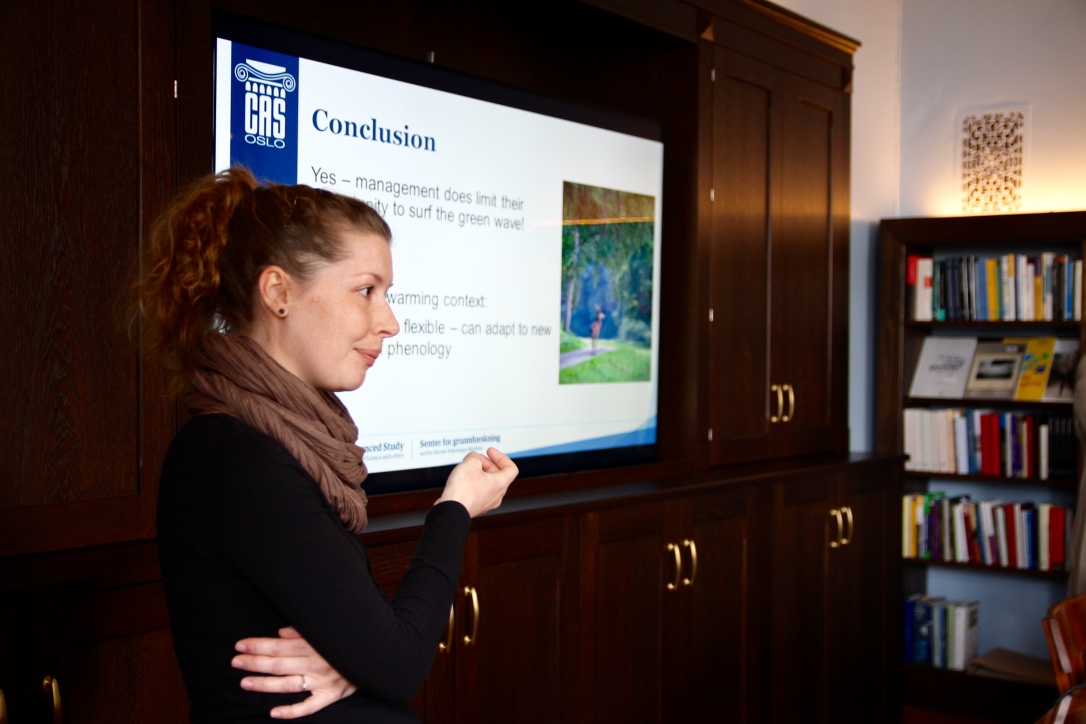
Red deer and roe deer will probably increase in terms of numbers, he continues:
– In Norway moose are everywhere, except a few areas on the west coast. But this is a recent phenomenon, as for all deer species. There were no roe deer in Norway in 1850. I don’t know the detailed history of moose in Europe, but there have been moose further south, and it is quite clear that they were eradicated by humans.
There is a big harvest of around 35,000 moose in Norway, so moose are by no means in danger of eradication. That is way ahead in the future, Mysterud explains:
– It is not so much so that moose are in danger of being eradicated, but climate change is affecting the productivity of the moose population. At this point, the positive effects of management due to changing human attitudes are so positive that if there were a negative effect of climate we would be able to buffer this by lowering our harvesting quotas.
Snow and temperature drive hibernation
Swenson says that bears mate in May and June, but the zygotes are not implanted until hibernation. Indeed, the researchers can read from the logging devices when the zygotes are implanted and when the young are born—both of which occur during hibernation.
This is called delayed implantation, Mysterud explains, which is quite common among carnivores. Among deer, delayed implantation only occurs in roe deer, he adds. The roe deer rut in July and August. Based on body size and normal gestation length, the roe deer mating season should be in December. Moose and red deer mate in October, and give birth in early June:
– This is quite interesting. Spring in many areas in Norway comes three weeks earlier now than twenty to thirty years ago. Of course, the optimal time of birth has changed. For our study species, we ask if they are rutting earlier, as gestation length is quite fixed and the timing of rutting should be directly linked to timing of birth in spring. But for Swenson’s study, we ask when implantation occurs. Then again, how much is due to phenotypic plasticity? How much can these animals change, and how much is inherited?
Mysterud and Swenson observe that a problem for these animals regarding the change to the rutting season is that there is no direct environmental link between the rut and the following spring, meaning that an element of selection must be linked to factors controlling the timing of rut, such as the photoperiod:
– Those that choose to mate a bit earlier do better. That has a direct link to selection, but we expect significant phenotypic plastic responses to climate change. In bears, this has a lot to do with the availability of berries. In any case, it will certainly have an effect on population performance.
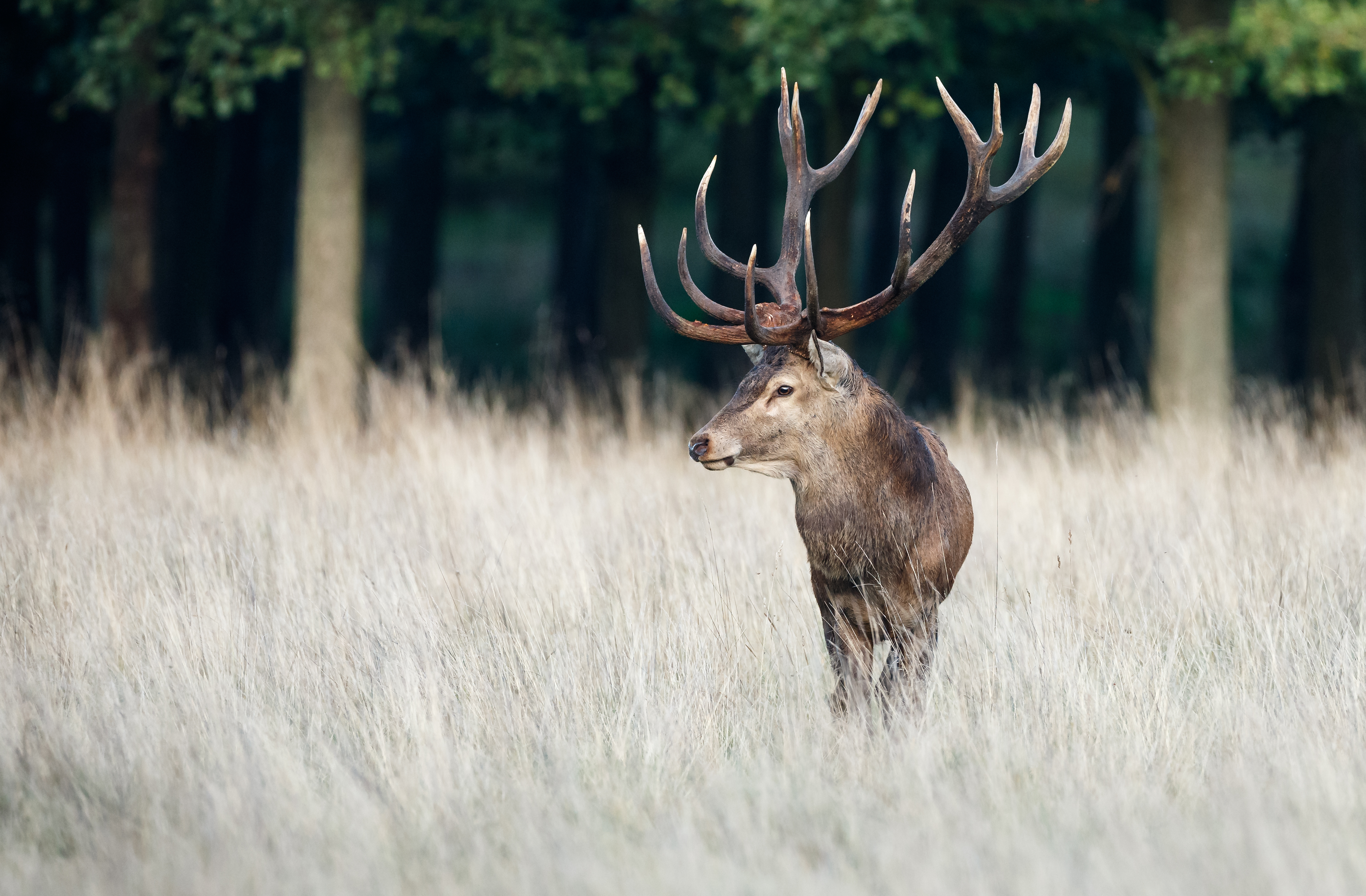
Swenson adds that snow comes later in the autumn now, and that the bears are going into their dens later:
– It looks as if snow and temperatures are driving when bears are going into the dens. That is an important time, because just before and right after they have gone into the den is also the period when most people are injured by bears. It is important for us to understand what is going on at this time and to try to inform people about how to avoid bears during this sensitive time.
His colleague chuckles and asks:
– Is that because they are grumpy when they are about to go into hibernation?
Swenson replies:
– That’s a really interesting question. During one recent summer, on more than 300 occasions, members of a bear group walked fifty meters from bears lying in a day bed. Researchers found that [in this situation] the bears always hid and then most of them fled. The bears changed their behaviour for the next two or three days, becoming more nocturnal.
– People, even researchers who know where they are and can follow them using radio equipment, did not hear or see bears [they were near] for 85 per cent of the time. That means that a meeting between a person and a bear is one that a bear experiences as much more dramatic than the person, because the person doesn’t even know that he/she was near a bear. The bear really reacts, however.
From the activity recorder and temperature data loggers, members of the bear research group can see that about half of the bears enter a pre-hibernation state several days before the main event, and do so at a distance of several kilometres away from the den site. Swenson explains,
– It seems reasonable to think that when bears are on a lower physiological plane, they have less physical ability to run away and react to danger, such as a meeting with people. Instead of running away, they may sometimes attack, because they feel threatened or cornered. We are able to answer such questions through these data loggers.
Bears live until they are killed by a human
The brown bear is an unbelievably adaptable species, Swenson says. He had a PhD student studying brown bears living at altitudes abover 4,000 metres in the Himalayas. A colleague of his is studying brown bears in the MacKenzie Delta, where the Mackenzie River flows into the Arctic Ocean. Another colleague studies them in the Gobi Desert:
– These are very low productive populations, but still, imagine this one species living in three totally different environments.
The situation for large mammals in a changing climate is not the same as that for insects, for instance, where you expect species to decline, Mysterud explains:
– In Asia, it is mainly humans, not climate, that cause extinction. In western countries, large mammal numbers are generally increasing.
Swenson follows up:
– Large mammals can deal with this; we don’t expect these species to go extinct on a global scale. On local and regional scales, they can and have gone extinct. In Europe there were brown bears everywhere, and also in northern Africa, Egypt, Libya, Morocco. Mostly, people are responsible for carnivore extinction.
What has changed over the thirty years that the bear project has been running?
– About 1,000 bears existed in Sweden when we started. Now there are 3,000. The hunting rate was very low and now it is so high that the population is going down. We have seen that several reproductive variables have changed: the age of first reproduction, and the time the mother keeps the youngFrom the climate model Richard Bischof has completed for the study period, we see the changes in climate. We have looked at the food habits fifteen to twenty years ago, and we can see from at least last year that the species of berries they are using has changed. We are following that to track the availability of berries.
Swenson goes on to ask whether the changes are due to climate change, or population density, or is it hunting regimes?
– Of course, that is why we need this big model that looks at everything at the same time.
Due to differing national management goals, there are many more bears in Sweden than in Norway, Mysterud and Swenson agree. The major reason concerns methods of sheep husbandry, but there is also a different attitude towards bears in Sweden, they argue.
Both countries had legislation in place to exterminate bears and other large carnivores, but it was repealed seventy years earlier in Sweden than in Norway. In Norway, legal protection of bears was introduced in 1973. Swenson adds:
– Even in the late 1800s, when Sweden and Norway were in a political union, Sweden decided to protect the bear so it would not go extinct. But a hundred years later, in Vassfaret in southern Norway, one could buy a car for the bounty money for shooting a bear. That is a pretty dramatic difference.
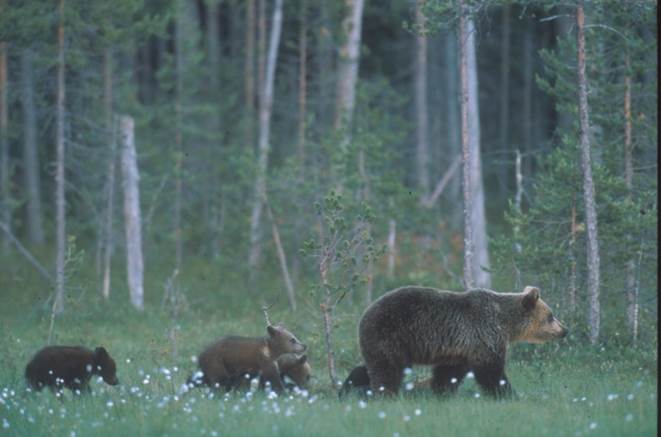
As a result of the increased pressure caused by hunting in the present day, the age structure of the bear population has changed. Bears are on average a lot younger now than thirty years ago, Swenson says:
– The bear project has been going on for thirty-two years, which is still below the maximum lifespan of a brown bear under natural conditions. Early in the project we had several bears up to thirty years old. We had a thirty-year-old male who we hoped would die a natural death, until he was poached. Now the oldest we have is twenty-four.
Mysterud picks up this theme, and continues,
– That is one of the reasons why we study the harvested population. Male red deer are less than ten per cent likely to reach four years of age; ninety per cent of them are shot before this. We expect that to have had a major effect on life history evolution, but there is little data available to document it.
When a cub—a baby bear—is born, it has a thirty to forty per cent chance of dying during the first year of life, primarily by being killed by male bears other than their father. From the ages of one to three years old, the chance of being killed by another bear is fifteen per cent. Almost all other mortality is human caused. Mysterud observes,
– Richard Bischof’s PhD intended to contrast the difference between natural mortality and hunting mortality, but we ended up contrasting hunting mortality and other human mortality.
Swenson concludes,
– Bears live until they are killed by a human, pretty much.
Worried about the berries
What consequences do you expect from climate change?
– Over time we have built up a hypothesis. The most obvious point is that roe deer and red deer will increase in numbers, because they are at their northern distribution range. We are a bit more concerned about moose, because the productivity of moose populations decreases at higher temperatures Mysterud answers.
Lower quantity and quality of berries is especially difficult for bears, because of their poor predator skills. They can steal some food from wolves or people, but that is not enough for them:
– Based on experimental studies on the effect of late winter thaws on the mortality and production of berry-producing species, we expect that climate change will cause a significant negative effect on the main foods that Scandinavian bears use to obtain fat for their winter hibernation—blueberries, crowberries, and lingonberries, Swenson says.
The bears eat about a third of their weight in berries per day to increase their body weight by fifty per cent.
– We are really worried about a potential decline in berry abundance, because there is no other food in the autumn that the bears can forage on efficiently to get fat, Swenson continues.
That there are numerous changes happening simultaneously is an ongoing problem in ecology, Mysterud observes:
– For example, the population density of bears has increased a lot, which we know is important, but climate change and changes in management come on top of this.
The usefulness of creating such a model, Mysterud argues, is that it allows researchers to tease apart the quantitative aspects and to pull them together in a model to answer whether these changes are large enough to produce a response. For instance, are changes in climate large enough to produce what we see, he asks:
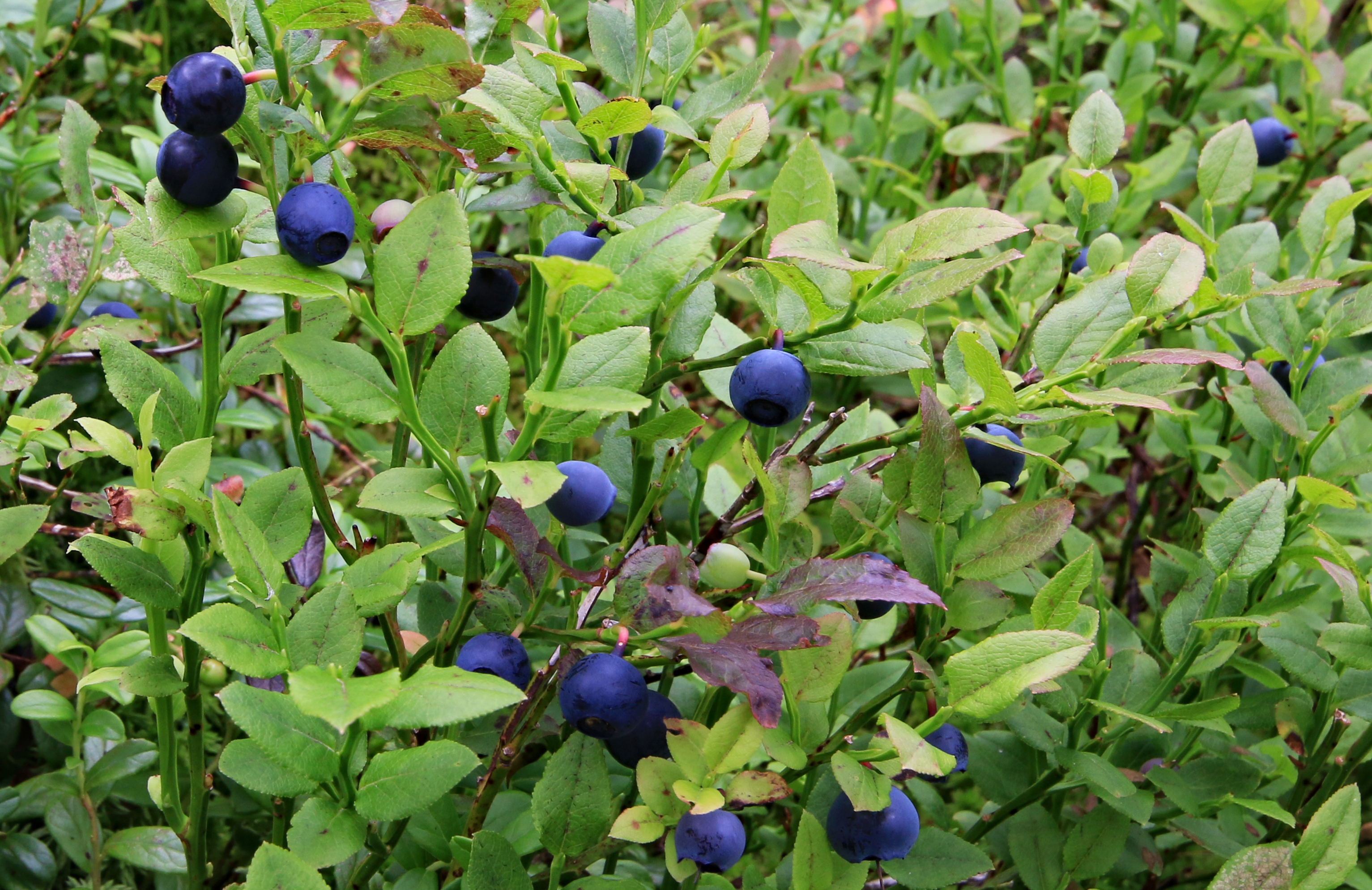
What do fewer bears in Norway mean for the ecological environment?
Swenson responds:
– Actually, they are starting to get some interesting answers to that question … the e. One is that the bears are formidable spreaders of seeds. They eat a lot of berries and plant seeds. They travel so much that they probably are very important seed dispersers, as are birds too.
Some researchers have proposed that the apple, which comes from the Caucasus, originally adapted to attract bears to spread the seeds. Recently published research from North America shows that when bears forage on ants, which are a very important food for bears in Scandinavia, the ants are not able to attack the aphids that feed on the plants. Swenson adds:
– That affects the plant quality and the reproduction. They could actually document the effects on plants of bears eating ants.
An indirect effect, Mysterud says, is that you cannot have free-ranging sheep where there are bears, because they would be eaten. If you remove all the sheep, that naturally has an effect on the ecosystem, because it is affected by their grazing. Swenson follows this up:
– Even if you don’t remove the sheep and have a herding system, like we did for thousands of years, it changes the effect on the landscape, because the sheep will graze differently. Everything has an effect.